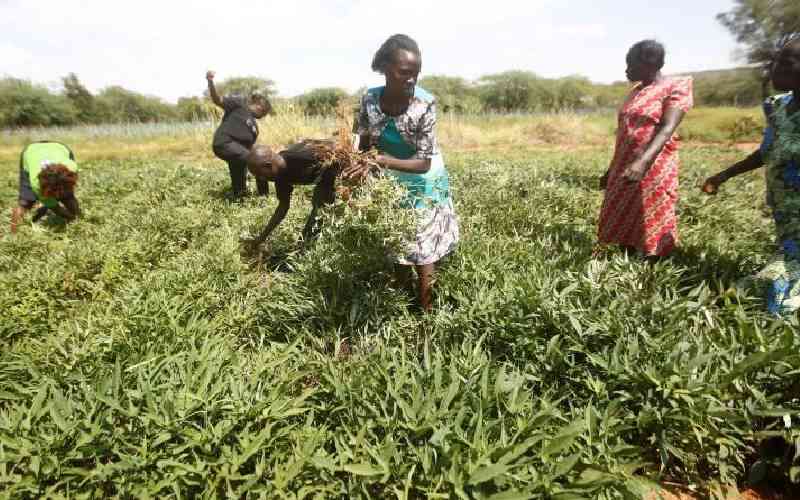
Reports of severe drought and looming hunger for hundreds of thousands of Kenyans in parts of the country betray Kenya’s commitment to its development ambitions as laid out in ‘Vision 2030’.
Food security has a direct effect on Kenya’s development agenda but sadly, it has not received the required attention and therefore remains grossly under-funded.
In Kenya today, one out of every four children less than five years old are stunted (are too short for their age).
Going by current population estimates, that is nearly 1.5 million children who will never reach their full potential.
From the 2016/2017 budget proposals tabled in Parliament by National Treasury Cabinet Secretary Henry Rotich earlier this month, it is very clear food security is not near the top of Kenya’s priority items. Food security and agriculture were allocated Sh12.2 billion against a projected population of 46 million. Sh260 per citizen is how much Kenya invested to ensure that we are well fed for the next twelve months.
In comparison, roads and railways were allocated Sh314 billion. Clearly, government is investing heavily in infrastructure; railway, roads, ports, oil pipelines and airports among others. This infrastructure is important as it supports our livelihoods.
It manages our access to food, water, energy, transportation, communication, waste disposal, and other critical services.
While infrastructure is necessary for economic growth, we cannot ignore the importance of investing in ‘grey matter’ infrastructure, through nutritional interventions.
We are in the information age, a global, knowledge-based, where people apply knowledge and skills to solve problems and advance society. The ability of people to think and be creative is vital.
As important as they are, we can build and repair roads and railways. However, brains damaged by undernutrition cannot be repaired. The damage is irreversible.
When the people have access to adequate and nutritious food, especially in their first 1,000 days of their lives, they are sharper and are more productive.
Studies show that adults who experienced stunting in their childhood earn 20 percent less than adults who were not stunted and are 33 per cent more likely to live in poverty and less likely to work in skilled labour.
The question then is, why are hunger and malnutrition not attracting the seriousness they deserve yet it makes a lot of economic sense?
Unfortunately, it is because such investments will not produce something that is big and shiny. We, the Kenyan people seem to love these big and shiny things that can be launched and our politicians know it.
Stay informed. Subscribe to our newsletter
This is perhaps why the national government and county governments are going all out to supply us new infrastructure.
However, it is time for us to start paying attention to human capital development as well.
Human capital development starts with good nutrition in the first 1,000 days of a child’s life. As long as Kenyans remain food insecure, Kenya will not attain her development ambitions.
In order for Kenya to be transformed into a newly industrialized middle income country by providing a high quality of life for its citizens by 2030, it is vital that we invest in feeding all Kenyans well.
 The Standard Group Plc is a
multi-media organization with investments in media platforms spanning newspaper
print operations, television, radio broadcasting, digital and online services. The
Standard Group is recognized as a leading multi-media house in Kenya with a key
influence in matters of national and international interest.
The Standard Group Plc is a
multi-media organization with investments in media platforms spanning newspaper
print operations, television, radio broadcasting, digital and online services. The
Standard Group is recognized as a leading multi-media house in Kenya with a key
influence in matters of national and international interest.
 The Standard Group Plc is a
multi-media organization with investments in media platforms spanning newspaper
print operations, television, radio broadcasting, digital and online services. The
Standard Group is recognized as a leading multi-media house in Kenya with a key
influence in matters of national and international interest.
The Standard Group Plc is a
multi-media organization with investments in media platforms spanning newspaper
print operations, television, radio broadcasting, digital and online services. The
Standard Group is recognized as a leading multi-media house in Kenya with a key
influence in matters of national and international interest.








